September 23, 2022 | The Most Splendid Housing Bubbles in Canada, September Update: House Prices Plunge

In Hamilton, Ontario, after a ridiculous mind-bending spike, prices plunged 5.8% in August from July, and are down 10.5% in three months. In Toronto, prices plunged 4.0% in August from July, and are down 8.3% in three months. In Vancouver, prices dropped by 2.0% in August from July; in Ottawa by 3.1% in August; in Halifax by 3.6%. But in the two oil towns, Calgary and Edmonton, prices still jumped. We’ll get to each of them in a moment.
The overall 11-City Teranet-National Bank House Price Index plunged by 2.4% in August from July, the largest drop ever, together with the December 2008 Lehman-bankruptcy plunge. Over the past three months, the overall index is down 4.1%. This whittled down the year-over-year spike from the 19% range in March and April to 8.9%:
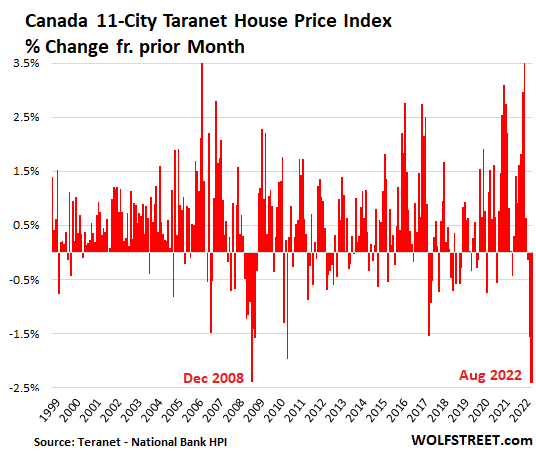
Canada’s most splendid housing bubbles are often ranked among the top of all global housing bubbles. But consumer price inflation has spiked and is spreading into the core of the economy, and the Bank of Canada has been cracking down with a series of rate hikes and QT.
These rate hikes included 75 basis points at its September meeting, when it specifically brushed off the pullback in the housing market, and by a monster 100 basis points at its July meeting, which BoC Governor Tiff Macklem explained to Canadians this way: “Things are not normal right now. After 30 years of low, stable inflation, many Canadians are experiencing the pain of high inflation – and the uncertainty that comes with it – for the first time.”
The BoC has also been unloading its balance sheet. Quantitative tightening is the opposite of quantitative easing, or “money printing,” and has the opposite effects on asset prices. Its total assets have fallen by 25% from the peak:
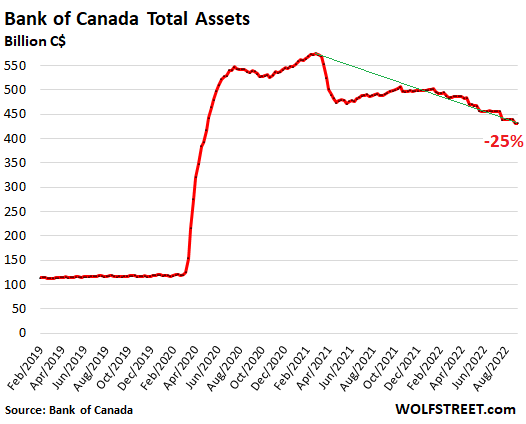
Higher rates & QT prick the most splendid housing bubbles.
Hamilton, Ontario, had become the #1 All Time Ever Most Splendid Housing Bubble in Canada, with ridiculous year-over-year price gains of around 30%, blowing past Vancouver and Toronto.
But now there are the distinctive sounds of hot air hissing out of this most splendid housing bubble. In August, prices plunged by 5.8% from July, according to the Teranet-National Bank House Price Index. In the three months since the peak in May, they have plunged by 10.5%, which slashed the year-over-year price increase to 8.7%.
Blame the three-month plunge on seasonality? Nah. Look at the chart and see if there is anything seasonal about this plunge.
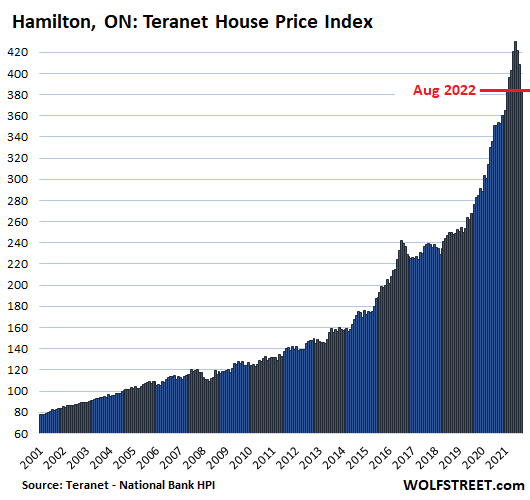
In the Greater Toronto Area, after the majestically ridiculous spike that peaked in May, home prices plunged 4.0% in August from July. Over the three months since, the index has plunged by 8.3%, slashing the year-over-year gain to 7.8%:
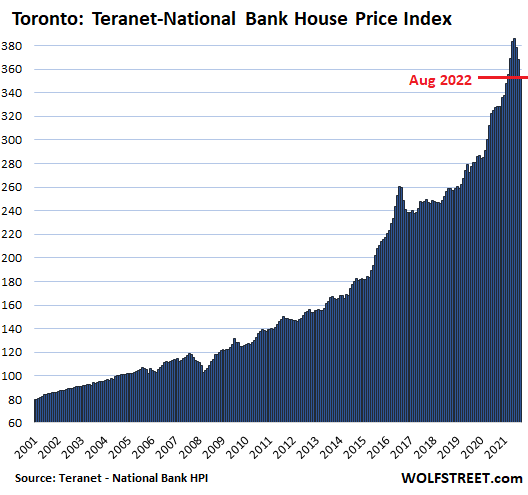
In Greater Vancouver, house prices dropped 2.0% for the month, and are down 4.1% from the peak in April. This whittled down the year-over-year increase to 8.4%:
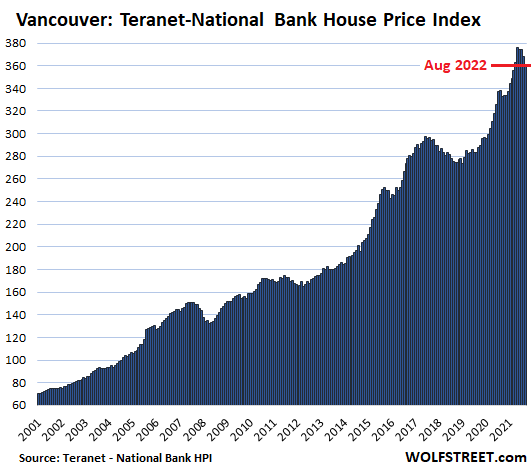
The Teranet-National Bank House Price Index is based on closed sales in August. This data set here is not seasonally adjusted and is not a three-month moving average. For the purpose of watching the housing market go from ridiculous spike into cliff-dive, the three-month moving average – which I used in all my prior reporting – is too slow in reacting.
The methodology of the Index is based on “repeat sales” that tracks the price of the same home each time it is sold over time. Unlike median prices, the “repeat sales” method is not impacted by a shift in mix of the homes that sold.
Halifax is not a huge city by any means, but it had a hugely splendid housing bubble with year-over-year price spikes in the 35% range. And the show peaked in June and over the two months since then, prices have plunged by a combined 8.7%, including by 3.6% in August from July. This has slashed the year-over-year gain in half, to 15%:
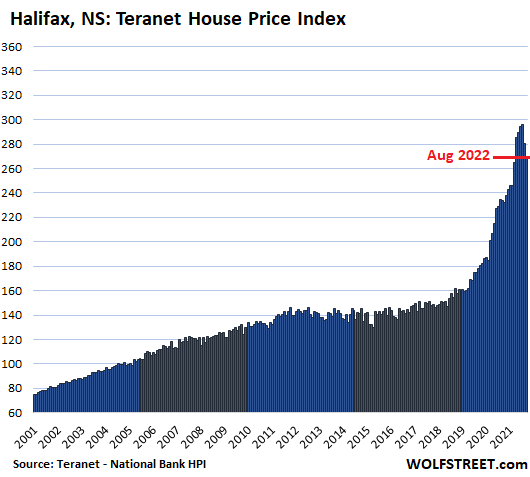
In Victoria, house prices fell by 1.2% for the month, and by 2.7% from the peak in May. This whittled down the year-over-year gain to 15%:
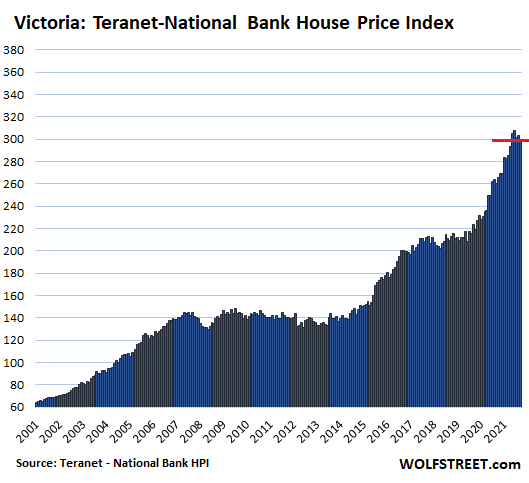
In Winnipeg, house prices fell 1.4% in August from July, which had been the peak, whittling down the year-over-year gain to 9%:
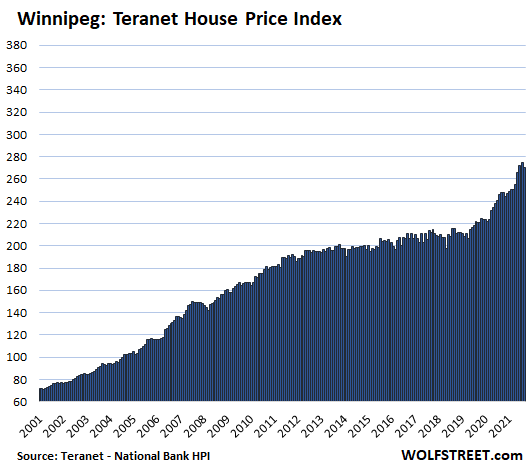
In Montreal, house prices, after falling 1.9% in July from the peak in June, edged down a hair in August. This left them down 1.7% from the peak in June and whittled down the year-over-year gain to 12.1%:
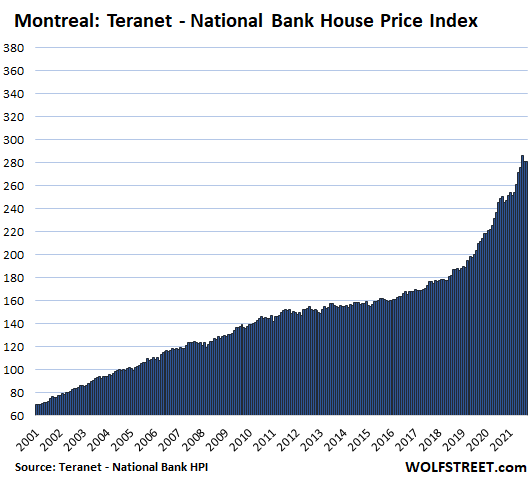
In Ottawa, house prices plunged 3.1% in August from July and by 4.6% over the two months from the peak in June. This slashed the year-over-year gain to 4.5%. Note the majestic late-to-the-party price spikes in March through May:
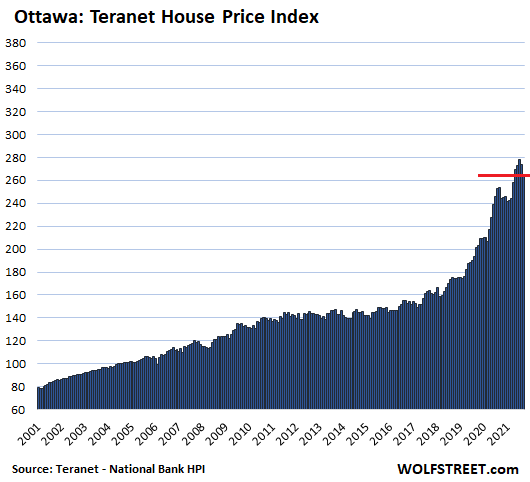
In Quebec City, house prices fell 1.1% in August from July, which had been the peak. This whittled down the year-over-year gain to 10.5%.
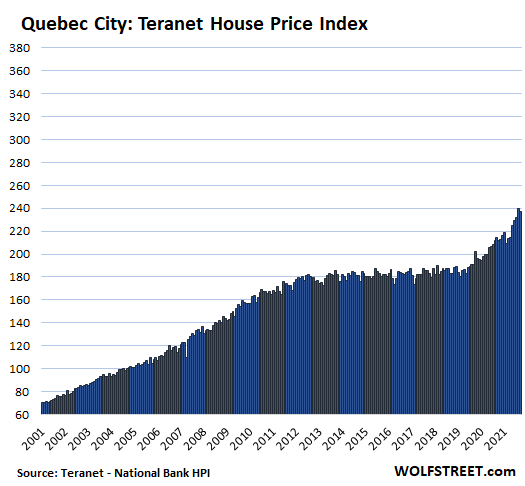
In Calgary, house prices had been roughly flat from mid-2007 until the Bank of Canada’s money-printing orgy started reaching this housing market in mid-2020. Calgary being the oil capital of Canada, and the oil business being in a boom right now, money is still flowing into the housing market.
In August, the index rose 1.3% from July, to a new record, bringing the year-over-year gain to 13.6%:
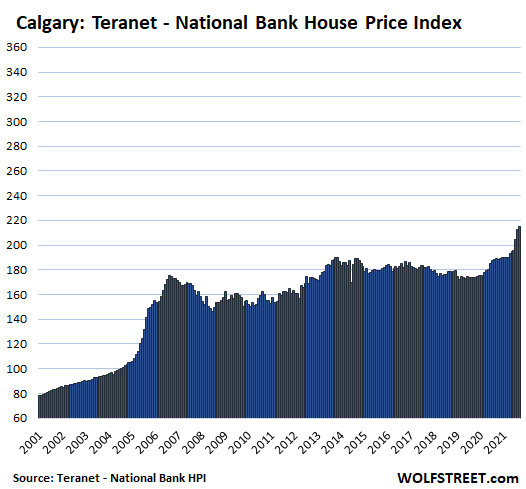
In Edmonton, also in Canada’s oil patch, house prices jumped by 2.7% for the month, bringing the year-over-year gain to 4.6%. Note how the oil-boom housing bubble that ended in 2007 turned into 15 years of essentially no price increases. Not much of a housing bubble here:
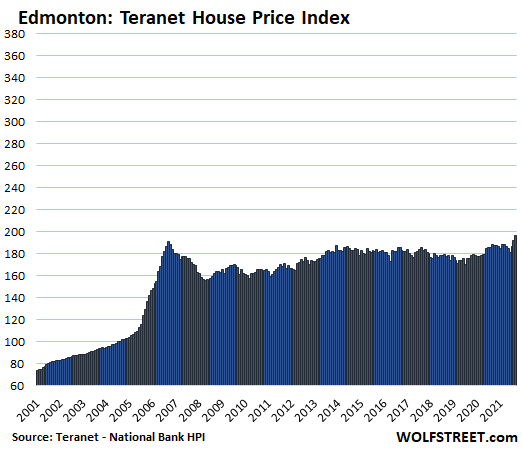
STAY INFORMED! Receive our Weekly Recap of thought provoking articles, podcasts, and radio delivered to your inbox for FREE! Sign up here for the HoweStreet.com Weekly Recap.
Wolf Richter September 23rd, 2022
Posted In: Wolf Street











